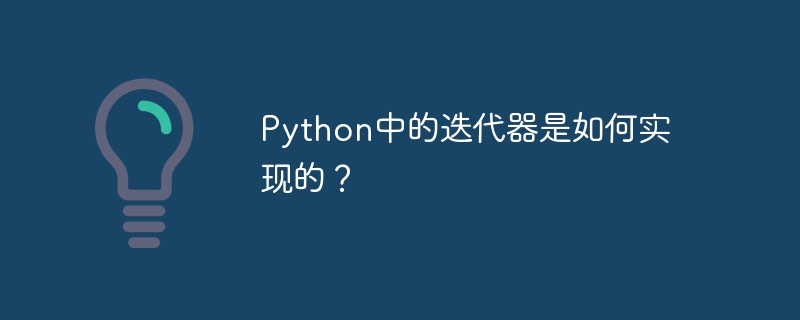

How are iterators implemented in Python?
Iterator is a very important concept in Python, which allows us to easily traverse and access elements in a collection. In Python, almost all iterable objects, such as lists, tuples, dictionaries, and sets, can be traversed through iterators. So how is iterator implemented? This article will introduce in detail how iterators are implemented in Python and provide specific code examples.
In Python, an iterator is an object that implements a method named __iter__() and __next__(). The __iter__() method returns the iterator object itself, while the __next__() method returns the next element in the iterator. When no elements can be returned, the __next__() method raises a StopIteration exception, indicating the end of the iteration. Let’s take a look at a specific code example:
class MyIterator:
def __iter__(self):
return self
def __next__(self):
# 实现迭代器的逻辑
passIn the above example code, we have created an iterator class called MyIterator. This class implements the __iter__() and __next__() methods. The __iter__() method returns the iterator object itself, which allows us to iterate over the iterator. The __next__() method is used to return the next element in the iterator.
So, how do we implement the iterator logic in the __next__() method? Here is a simple example that shows how to use an iterator to traverse a list:
class MyIterator:
def __init__(self, data):
self.data = data
self.index = 0
def __iter__(self):
return self
def __next__(self):
if self.index >= len(self.data):
raise StopIteration
result = self.data[self.index]
self.index += 1
return result
# 创建一个迭代器对象
my_iterator = MyIterator([1, 2, 3, 4, 5])
# 遍历迭代器
for num in my_iterator:
print(num)In the above example, we created an iterator class called MyIterator and passed in a list as a parameter. In the __next__() method of the iterator, we use self.index to track the currently traversed index position, and access the elements in the list through self.data[self.index]. When all elements have been traversed, we use raise StopIteration to end the iteration.
Finally, we iterate over the iterator object by using a for-in loop. Each iteration, the __next__() method is called to return the next element in the iterator and print it out.
Summary: Iterators in Python are implemented by implementing the __iter__() and __next__() methods. The __iter__() method returns the iterator object itself, while the __next__() method returns the next element in the iterator. In an iterator, we can implement the logic of traversing and accessing elements by using indexes. I hope this article helps you understand how iterators are implemented in Python.
The above is the detailed content of How are iterators implemented in Python?. For more information, please follow other related articles on the PHP Chinese website!




